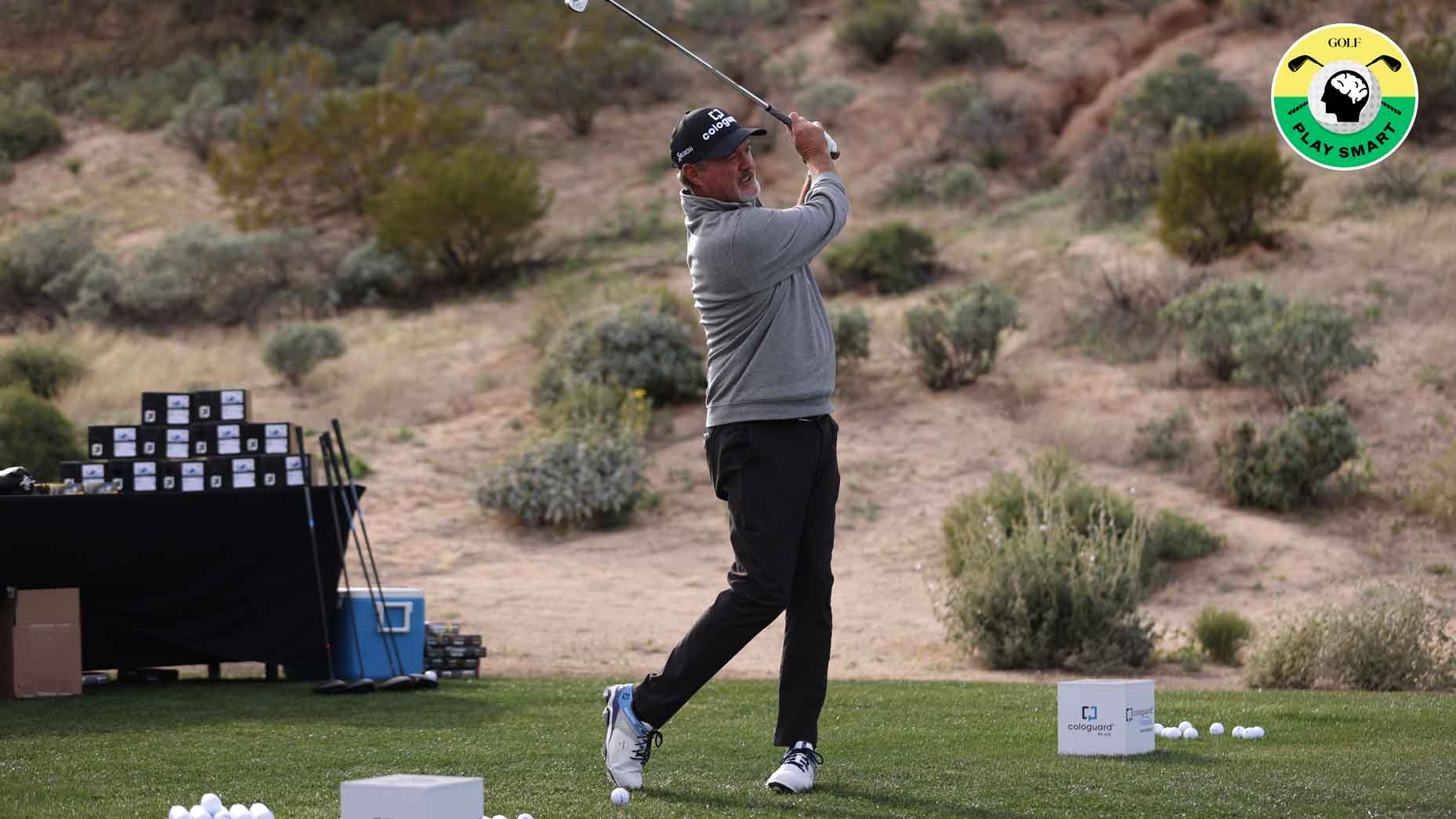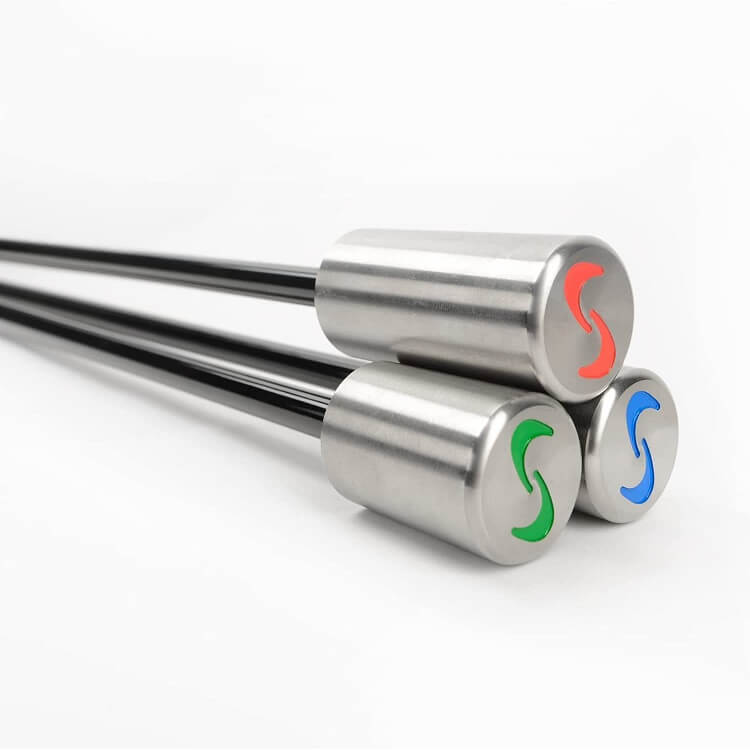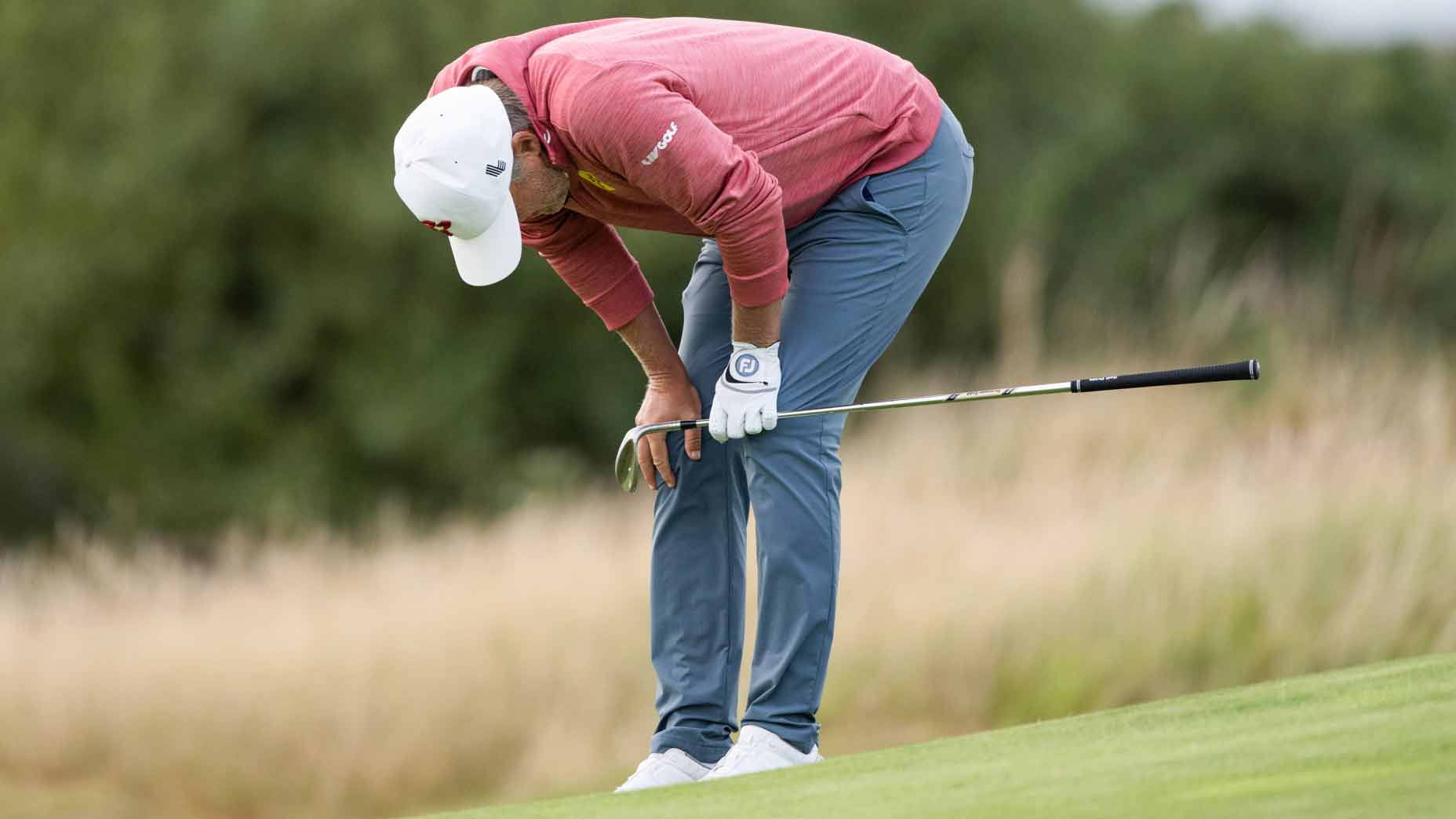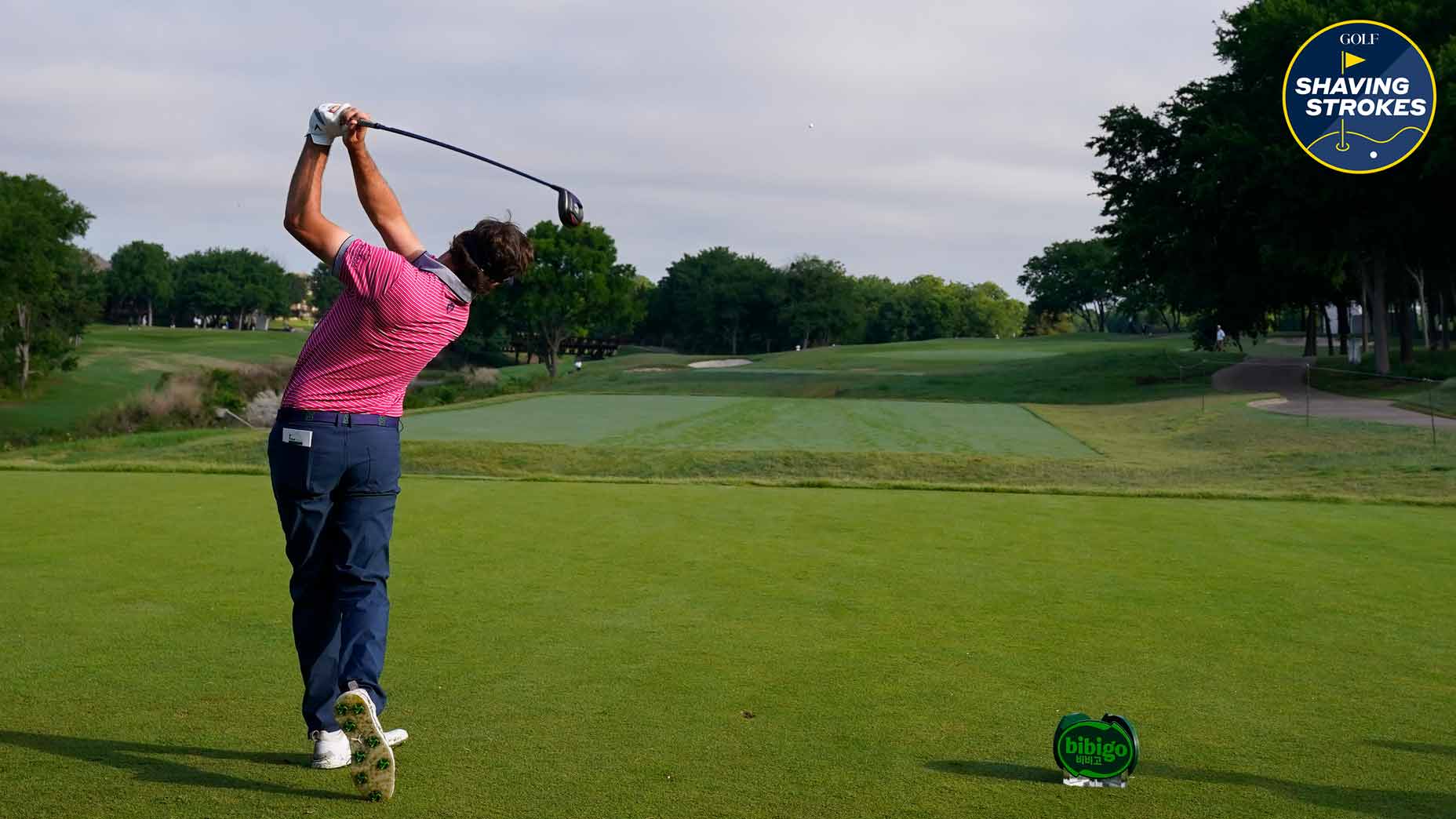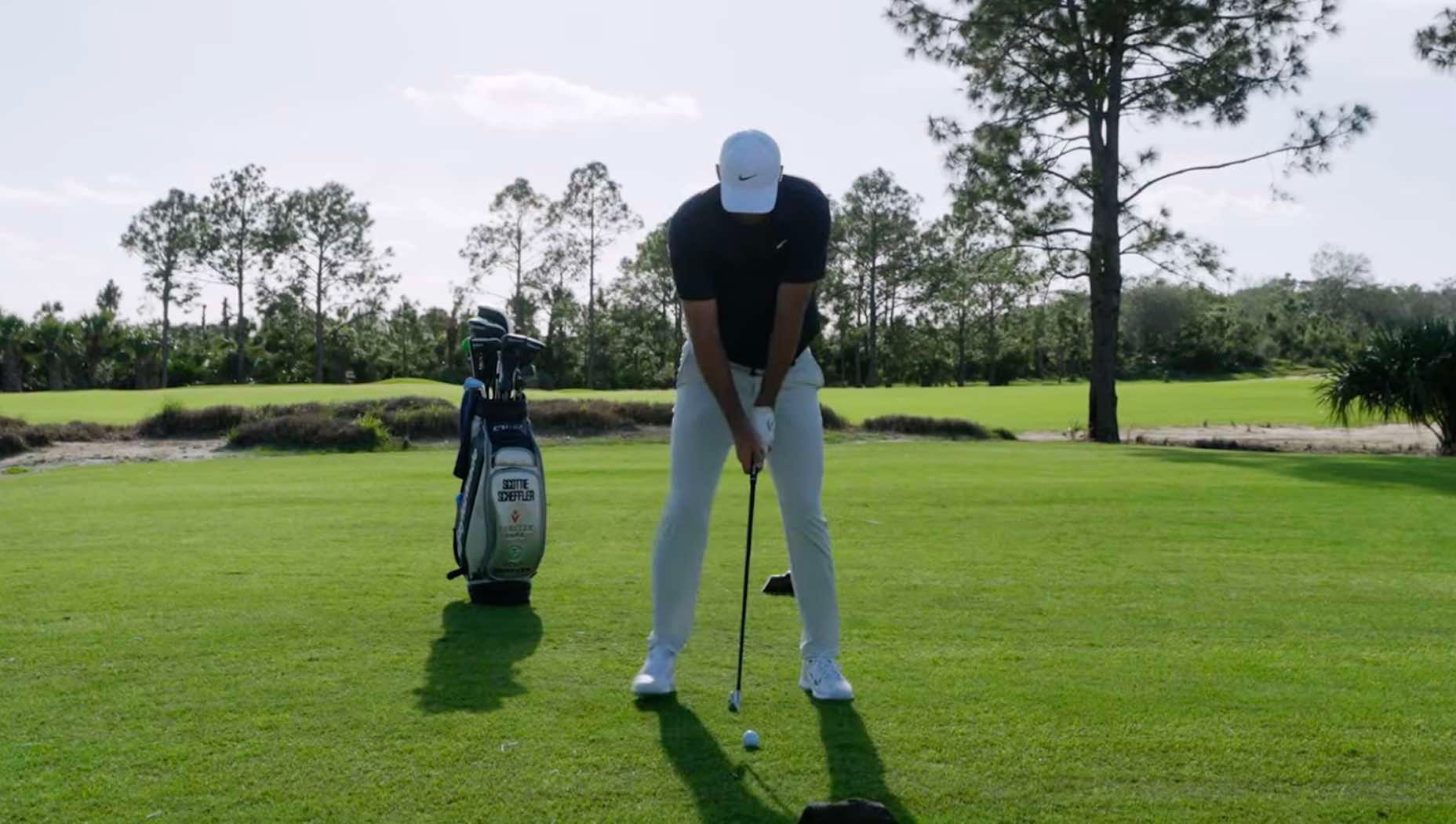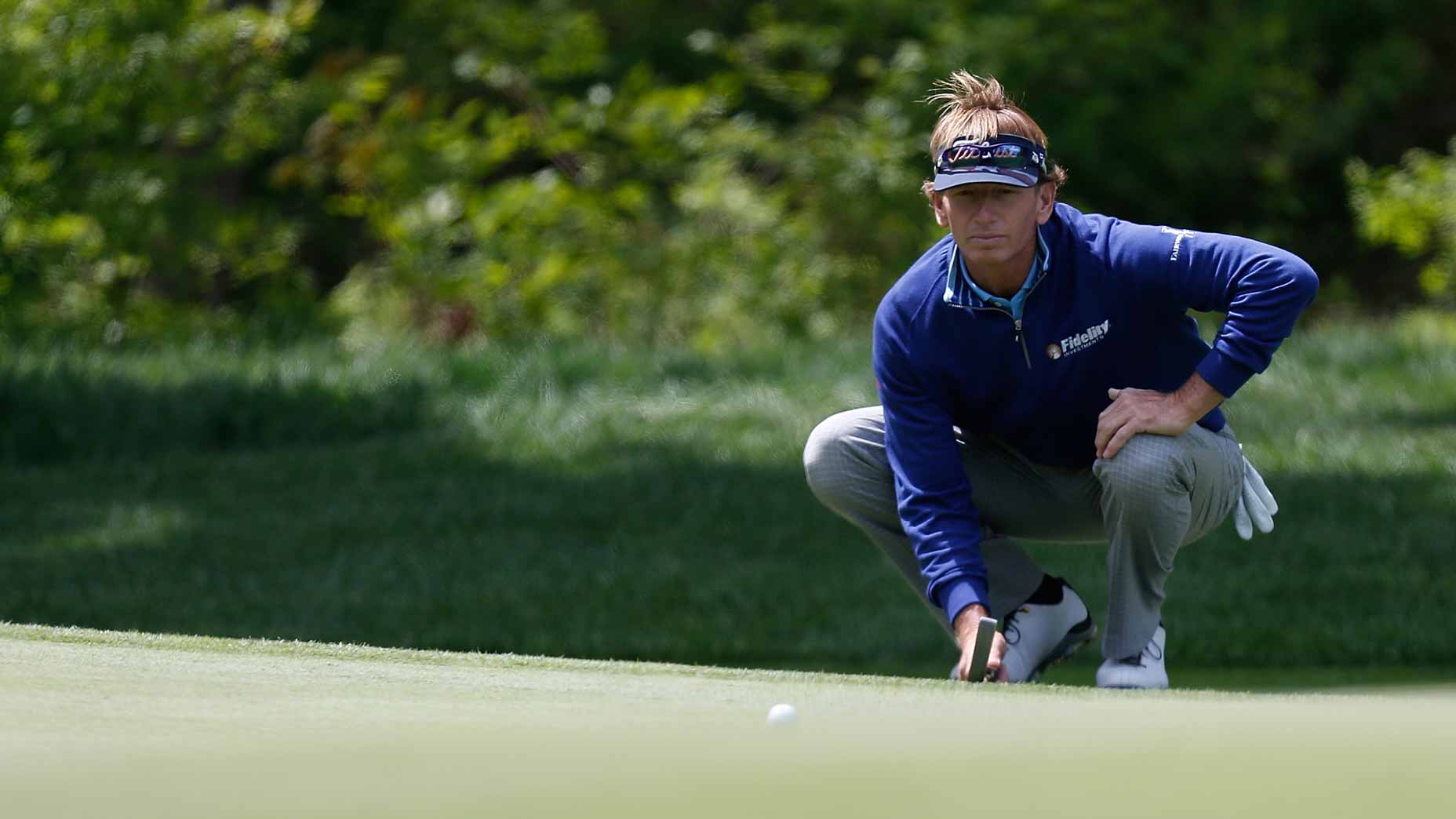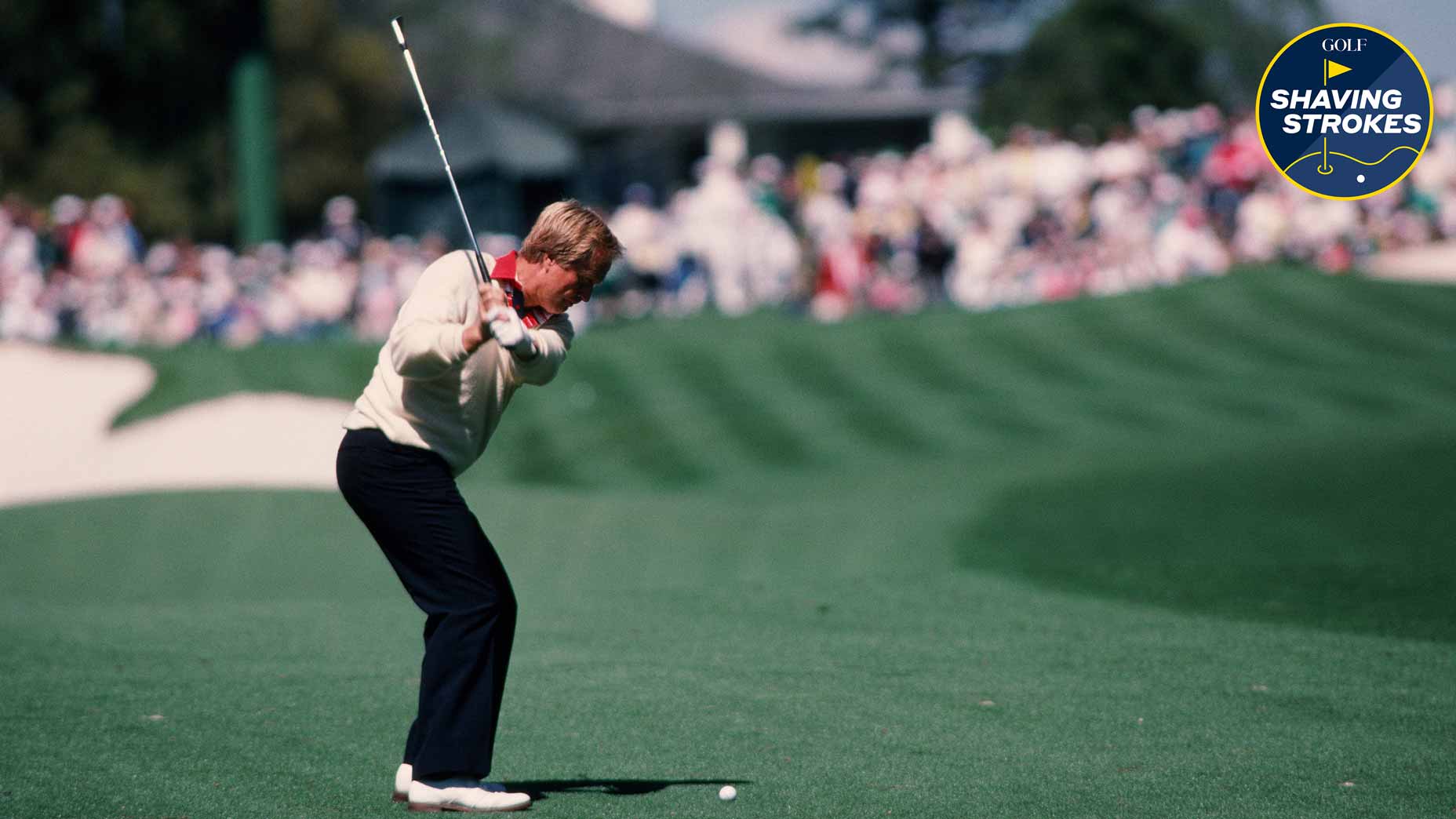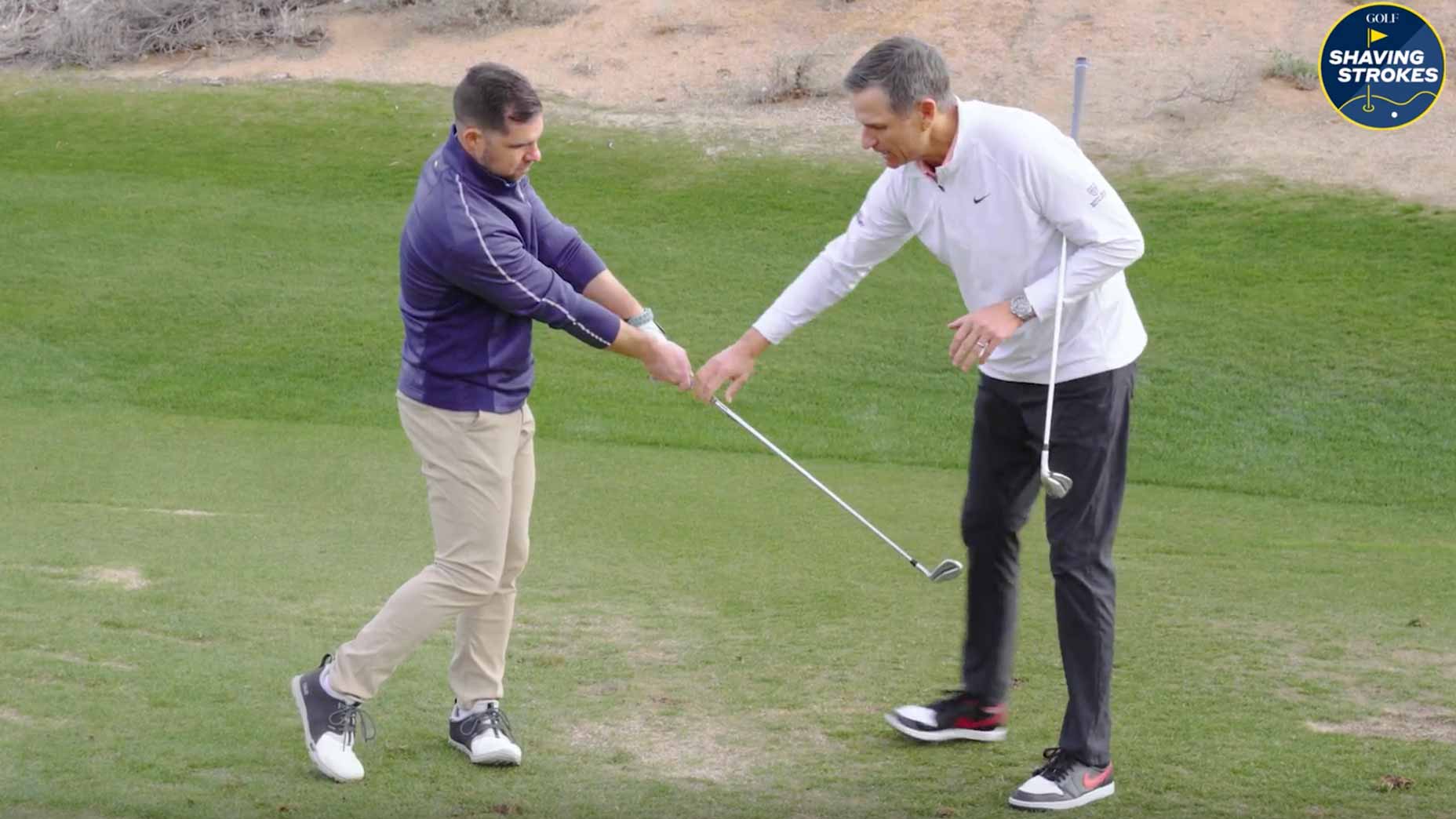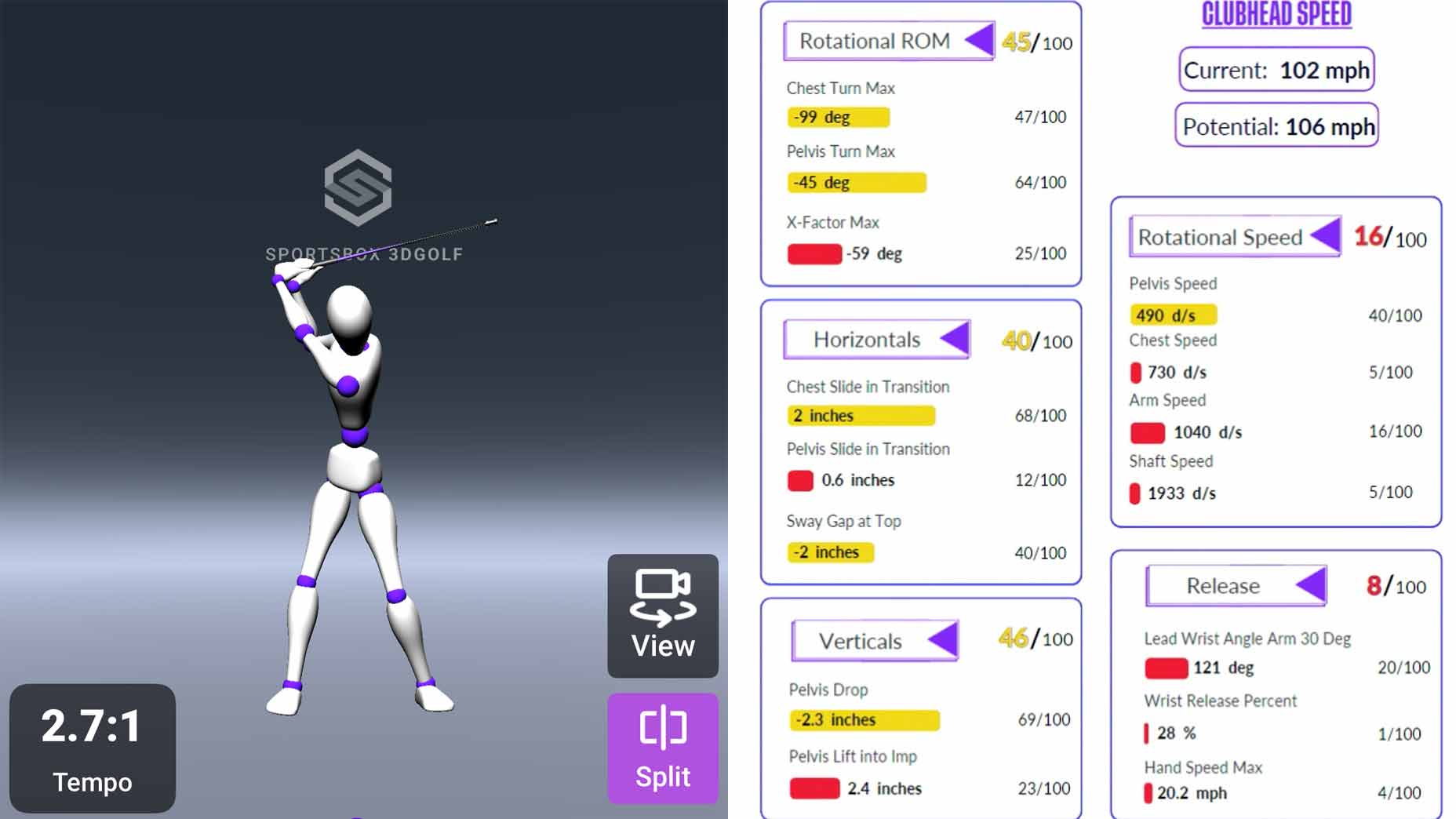How a 69-year-old golfer shaved 11 strokes off his handicap

This 69-year-old went from a 10-handicap to a +1. Here's how he did it.
Getty Images
Welcome to Shaving Strokes, a new GOLF.com series in which we’re sharing improvements, learnings and takeaways from amateur golfers just like you — including some of the speed bumps and challenges they faced along the way.
As players get older, it’s only natural that they lose some distance, as their body just isn’t capable of doing what it used to do.
With the lack of rotation comes decreased clubhead speed and, thus, shorter shots. Outside of absolute freakshow athletes like Padraig Harrington — who still bombs it about 300 yards despite being 51 years old — many players over the age of 50 just can’t stripe it like they did when they were younger.
But that doesn’t mean there aren’t drills to try and regain some of those distances.
In today’s Shaving Strokes, GOLF Top 100 Teacher Tony Ruggiero explains how he helped a 69-year-old golfer named Jerry not only shave 11 strokes off of his handicap, but also how he was also able to get Jerry to generate more length with each one of his clubs.
Jerry’s motivation: To compete in Senior Amateur tournaments
Ruggiero started working with Jerry a few years back and instantly noticed that this 60-something golfer had a little bit more athleticism than many of his peers.
“Jerry was in his 60’s and was very athletic. He was a runner,” Ruggiero said. “Jerry was about a 10-handicap, often shooting 80-85, with the occasional high-70 — though not often. He wanted to learn to play good enough to compete, with his goal to play in local and state Senior and Super Senior Amateur tournaments.”
After identifying how competitive Jerry was, Ruggiero said he knew he could get the necessary commitment in order to have him reach his goals.
Over the past couple of years, Jerry has set aside one hour each month to work with Ruggiero on his golf game — which Ruggiero affirmed was more than enough to see the gains Jerry was looking for.
“When looking at Jerry’s game, we came to the conclusion that he needed more golf club distance; especially off the tee,” Ruggiero said. “At that time, he drove it no further than 225 yards, and he was lacking the ball control to make his misses better.
“Jerry’s good shots were always good, but his bad shots weren’t good enough to play competitive golf.”
How Ruggiero helped Jerry increase his distance
After identifying the issue and better understanding Jerry’s goals, Ruggiero put together the following plan to help his student.
“First, Jerry’s lack of distance came from a lack of a pivot. His lack of pivot came from two things: His understanding of what would create power, as well as some physical limitations,” Ruggiero said. “His poor misses came from a club that got away, twisted off the plane going back, and came way across the line at the top.”
1. Pivot fix
To help fix the pivot, Ruggiero first talked with Jerry about what he was trying to do during the swing.
“Teachers often forget or neglect to ask the student what they’re trying to accomplish,” Ruggiero said. “This is often the key to what’s going on.”
Ruggiero noticed that Jerry was trying to transfer weight back to his right side on the backswing, then make it go to his left at the finish. The problem here was that Jerry was doing it by shifting or sliding his hips, rather than turning or loading into his trail hip.
“When we talked about it, he said he felt the pressure or weight on his back leg on the backswing; so he assumed that was correct,” Ruggiero added. “With good Tour players I teach, they move the pressure into the trail side by making a pivot or turn, and that moves the pressure back there.”
2. Posture fix
Next, Ruggiero performed a test that placed Jerry on just his right leg (his lead leg), and asked him to take a backswing. While doing this, Jerry wobbled and nearly fell over.
Given his athleticism, Jerry was surprised he almost fell, believing that his regular gym routine was enough to help maintain balance.
But Ruggiero had to explain that Jerry wasn’t doing the right kind of exercises (with the proper ones Jerry used available here).
“Sure, he goes to the gym, but he doesn’t do any exercises that are dynamic to build stability in each side of his body.
“We also found that, from all the running, Jerry had extremely tight hips,” Ruggiero said. “The lack of stability combined with the lack of mobility in his hips made it difficult for Jerry to turn into his trail side, which impacted his turn through the ball.”
3. At-home exercises
Ruggiero’s main focus was now to help Jerry improve his ability to wind up in his backswing, so he assigned at-home exercises for him to try — which led to a more powerful pivot and allowed him to learn a more powerful movement pattern.
“Making a change in your golf swing is slowest when done full speed with a club and a ball,” Ruggiero said. “Jerry’s work schedule and busy life was going to help his golf game here. He didn’t have as much time to go to the range and beat balls.
“But Jerry did have time for going to the gym. What we did was give him exercises that improved mobility in his hips, and increased stability in each side of his body.”
The at-home exercises included lots of one-legged pivot drills and split stance drills with a band (where he had to stabilize his lower body while learning to rotate his upper body).
By incorporating these exercises into his gym routine, Jerry developed the movements to make a new and improved golf swing.
“His swing got better each time he went to the gym to practice these exercises,” he added. “Jerry came once a month over a year or so. To his credit, he was willing to stick to the same couple of things each time.”
4. Swing plane drill
To help Jerry maintain his club path and stay on plane, Ruggiero had him try an easy drill — which players of all skill-levels can use.
“As Jerry’s pivot improved, the club began to twist less,” Ruggiero said. “So I had him stick a tee coming out of the grip of the club, focusing on where the tee was pointing.”
When Jerry got the tee pointed towards the target line, the club was in a better position at the top.
“Jerry also hit balls with an alignment stick on the ground (available here), and worked on keeping that tee pointed at the target line,” he said. “The better he got with his pivot, the better he played. By this time, his handicap dropped to a 6, and he would regularly shoot in mid-70’s.”
5. Rotational drills
Finally, Ruggiero focused on adding more rotational drills to Jerry’s exercise regimen. This helped generate more power and, in effect, add more distance with each shot.
“By adding these drills, we improved his ability to drive off of his trail foot and rotate through the ball,” Ruggiero said. “So we kept an eye on the backswing and changed his gym routine to be more focused on pushing and driving off the trail side. This cleaned up Jerry’s clubface issues through impact, and helped provide better ball control.”
The results
Recently, Jerry’s handicap index has gotten to +1, and he competes regularly in both state and local Senior Amateur events. He recently had gotten to four under thru eight at a state senior tournament, ultimately placing 15th.
Jerry just turned 69 years old, and some of his golf club distances are as follows: 245-255-yard carry with his driver, and his 7-iron has gone from 138 yards with 102 mile per hour ball speed to 155 yards with a ball speed of 110 miles per hour.
After helping Jerry reach his goals and add the necessary distance to compete in tournaments, Ruggiero reminds other players that improvement is achievable — it just requires a good plan that address the real problem.
“The path to becoming better isn’t as complicated as many think,” he said. “It takes finding a solution and having the commitment from the student to stick with it.
“I’ve found that a huge portion of the golfing public is similar to Jerry. As a teacher, my job is to educate these player and help them develop the ability.
“Sure, not everyone can shave 11 strokes, but everyone can improve their mobility and stability, helping them develop and improve their movement pattern.”
Want to share your firsthand experience for a chance to be featured in a future Shaving Strokes article? Share your details and progress by emailing me at nick.dimengo@golf.com. We’re all in this together, so let’s share our wins, our learnings, and our frustrations in order to help one another improve!

